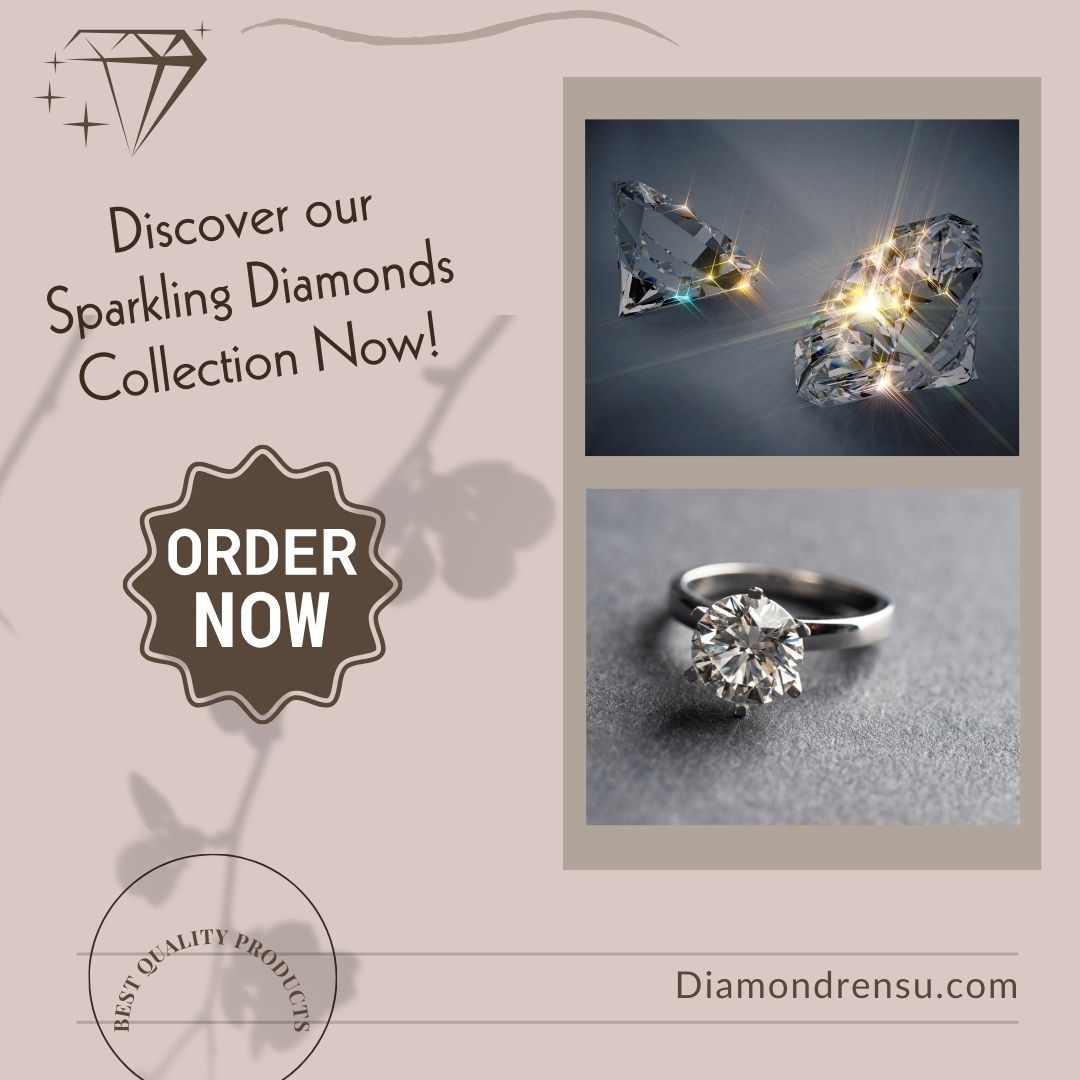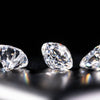
EGL Diamond Certification: Ensuring Authenticity and Quality in Your Purchase
EGL diamond certification is a process where diamonds are graded and documented by the European Gemological Laboratory, a network of gemological laboratories established in 1974. Historically, this certification has attracted customers with its often lower-priced diamonds compared to stones with certificates from labs with more stringent grading, like the Gemological Institute of America (GIA). In the jewelry industry, certification is a critical step for any diamond as it assures the buyer of the stone's authenticity and value.
While I recognize the various grading entities, it's important to be aware that EGL's grading standards are perceived as more lenient relative to the industry benchmark set by GIA. Therefore, an EGL-certified diamond may often come with a grade that might be slightly higher than what it would receive from GIA. It is crucial to approach the process with an understanding that while EGL certifications may offer more competitive prices, discrepancies in grading could impact the long-term value and authenticity of the diamond.
In my expertise, selecting a diamond with EGL certification calls for careful consideration. It's essential to interpret the EGL report by analyzing its evaluation criteria—such as carat weight, clarity, color, and cut. This attention to detail is invaluable for both jewelers and consumers, ensuring they make informed decisions and understand the nuances between different grading reports. A comprehensive understanding of EGL certification enables buyers to gauge the true quality and value of a diamond, which is especially important when investing in such significant and enduring pieces.
Understanding EGL Diamond Certification
As a gemologist, I'm familiar with various diamond certifications, and the European Gemological Laboratory (EGL) is a notable name in the industry.
The History of EGL and Certification Standards
EGL was established in 1974 in Belgium and quickly expanded its reach internationally. Certification standards set by EGL include a comprehensive evaluation of a diamond's four C's—Cut, Carat, Color, and Clarity. However, while EGL laid down a foundation for diamond grading methodology, it's considered by many in the industry to have a more lenient grading system than some other institutions.
Differences Between EGL and Other Laboratories
| Certification | Pros | Cons |
|---|---|---|
| EGL | May offer lower-priced certificates | Perceived lower reliability and consistency |
| AGS | Focuses on cut quality and light performance | Less recognized than GIA |
| GIA | High reputation for accuracy and consistency | Generally higher-priced certificates |
| IGA | Provides reliable grading services | May not be as widely recognized as GIA or AGS |
Comparing EGL to the Gemological Institute of America (GIA) and American Gem Society (AGS), their standards for grading are not necessarily uniform. For example, a GIA-certified diamond might be graded several notches higher in terms of quality attributes than one with an EGL certificate. This sometimes leads to price discrepancies based on the certification origin.
EGL Certification Process
The EGL certification process involves a detailed analysis of a diamond by gemologists using controlled conditions and specialized equipment. Cut grading, color grading, and clarity grade are part of this evaluation, alongside a full diamond report. Gems are also plotted to represent inclusions and blemishes.
Interpreting an EGL Certificate
EGL certificates list extensive details about the grading practices and results for individual stones. Every certified diamond has a unique report, which may include a laser inscription registry for online verification. This full diamond report provides crucial information for evaluators and buyers.
Advantages of EGL Certification
EGL certificates give buyers peace of mind by confirming the quality of their diamond. Furthermore, EGL can offer a faster turnaround for grading and certification compared to some competitors. This can be attractive for consumers looking for quick service and possibly cheaper grading options.
Criticisms and Controversies
Although EGL has played an important role in the industry, controversies have arisen due to their sometimes inconsistent and lenient grading compared to organizations like GIA or AGS. As a for-profit organization, questions have surfaced about the potential influence of business interests on the grading process. This has led to debates on the reliability of their certifications and occasional claims of fraud.
Key Characteristics Evaluated by EGL

In my examination of diamond certification, specifically the standards upheld by the European Gemological Laboratory (EGL), I've identified a structure focused on two core components. These encompass the essential Four C's of diamond quality, complemented by other grading factors that influence a diamond's certification outcome.
The Four C's of Diamond Quality
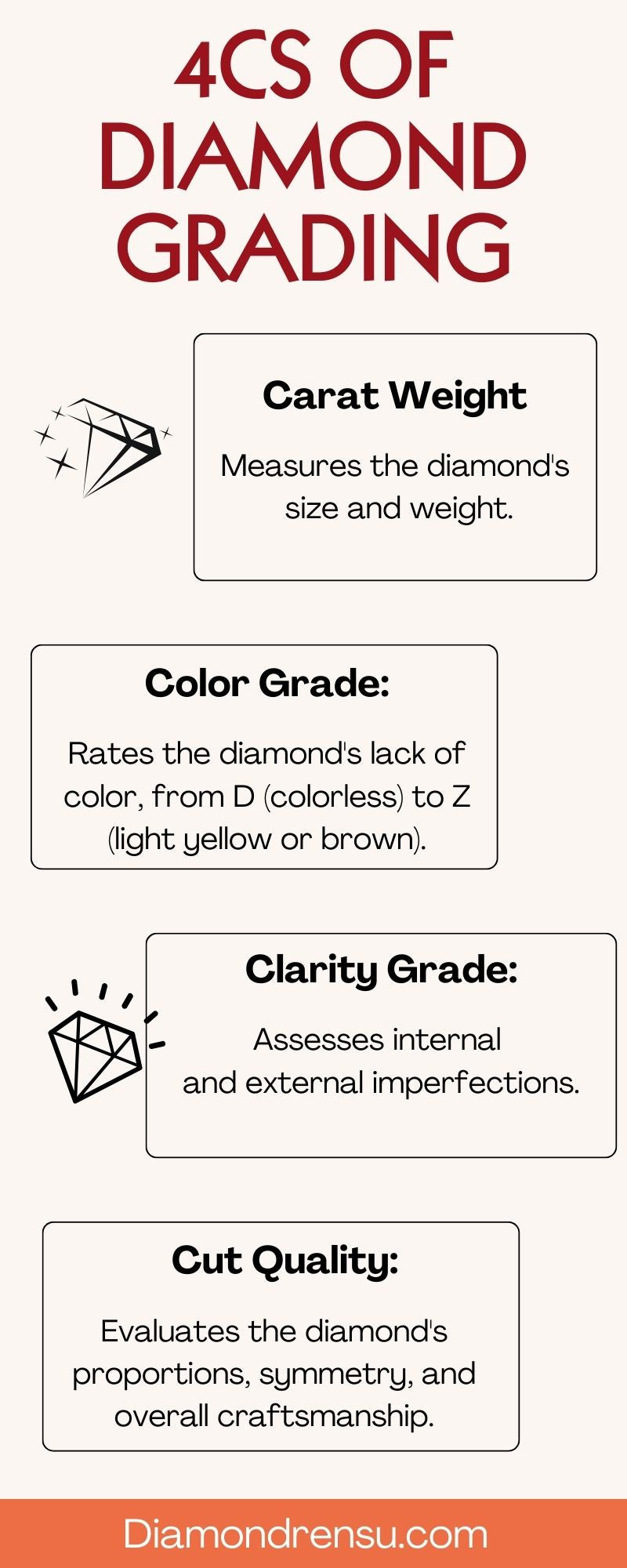
Carat Weight:
- Carat is the measure of a diamond’s weight. One carat is equivalent to 200 milligrams. Carat weight is crucial as it often correlates with a diamond’s size and overall value.
Color Grade:
- The color of a diamond is graded on a scale from D (colorless) to Z (light yellow or brown). A colorless diamond allows more light to pass through it, resulting in superior brilliance.
Clarity Grade:
- Clarity refers to the presence of internal inclusions or external blemishes. Grades range from Flawless (FL) to Included (I). Certified diamonds often aim for a balance in clarity that does not impact their sparkle.
Cut Grading:
- A diamond's cut is assessed by how effectively the cutting process unleashes its potential for brightness, fire, and scintillation. The cut grade spans from Excellent to Poor.
Additional Grading Factors
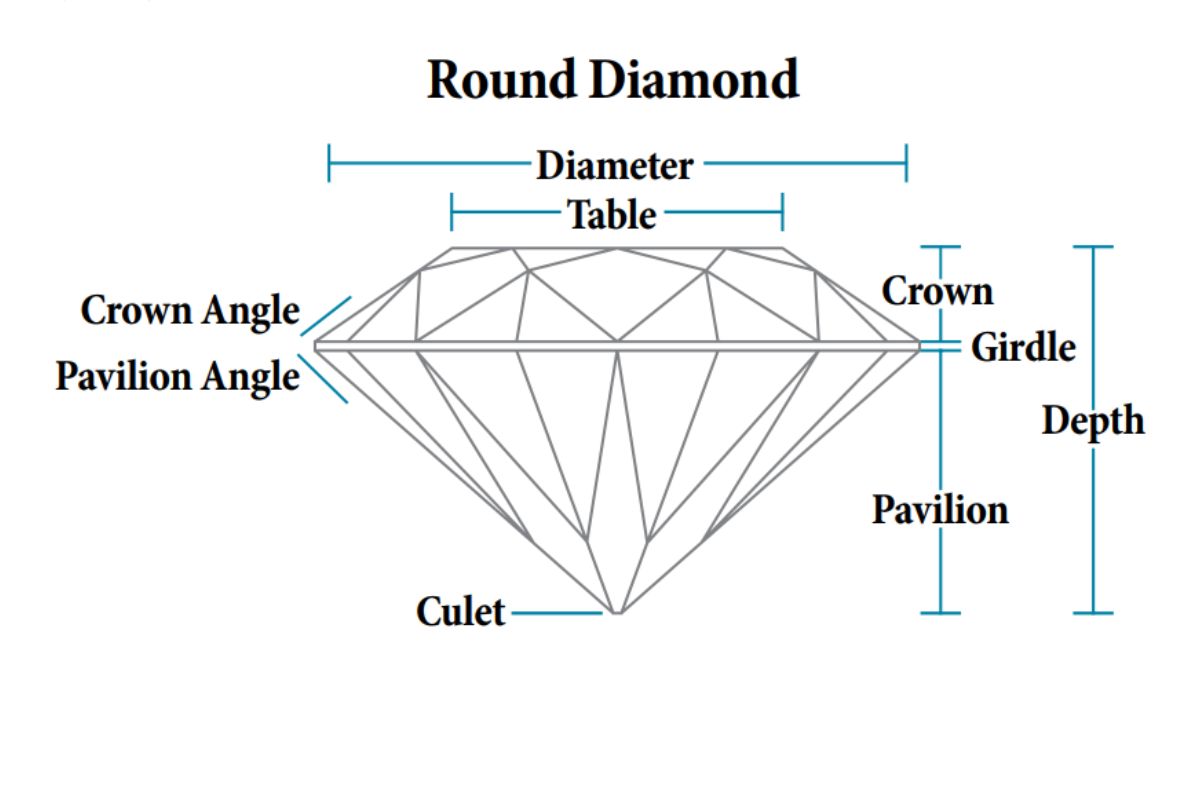
Polish and Symmetry:
- The finish of a diamond includes the polish and symmetry. Both are indicators of the care taken by the cutter during the diamond’s creation.
- Polish: How smooth and defect-free the surface is.
- Symmetry: How precisely the facets align and intersect.
Proportions and Measurements:
- A diamond's proportions—the relationships between table size, crown angle, and pavilion depth—can greatly affect its optical performance. Exact measurements are provided to ensure the diamond meets precise grading standards.
Fluorescence:
- I take into account the fluorescence of a diamond, which describes how it reacts to UV light. It varies from None to Very Strong, affecting the stone's appearance under different lighting conditions.
Comparing Diamond Certificates

When selecting a diamond, it's crucial for me to understand the differences between the various certificates to ensure that I am making an informed decision. Diamond certification by respected labs provides a professional assessment of a diamond's qualities, affecting both its value and my confidence in the purchase.
EGL vs. GIA Certificates
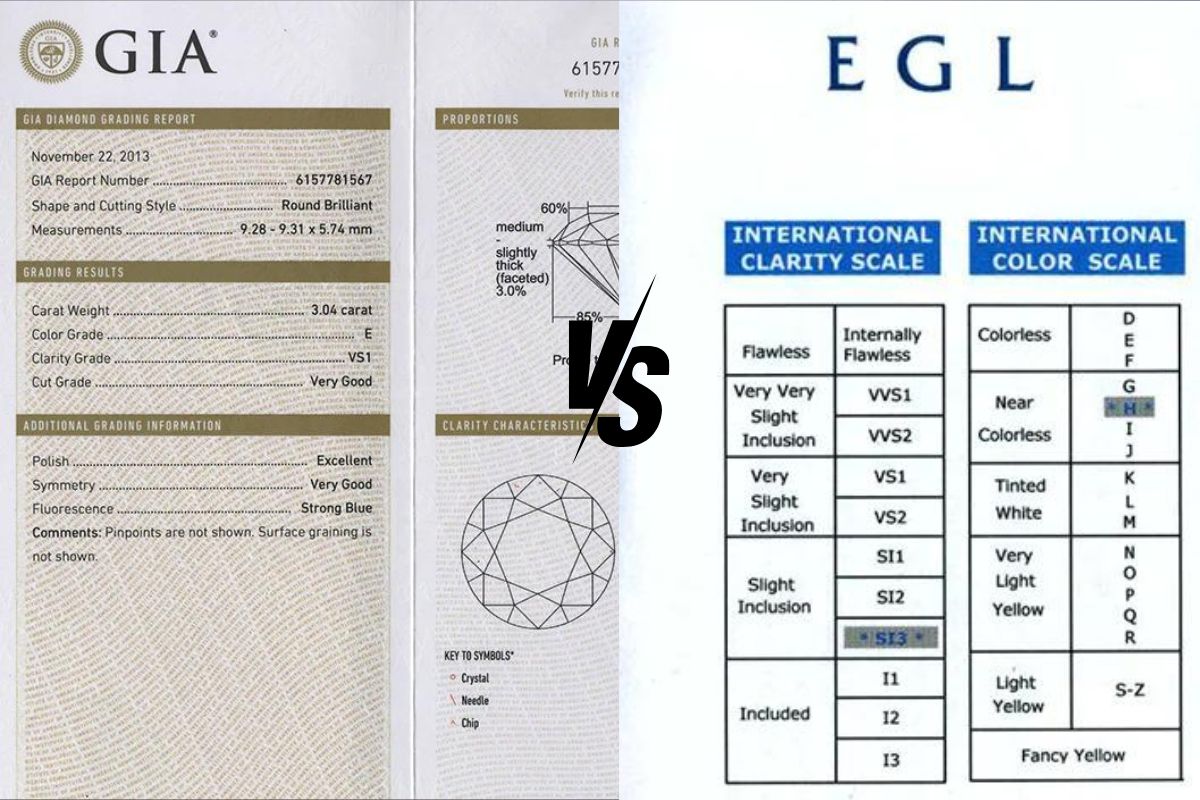
European Gemological Laboratory (EGL):
- Grading Standards: EGL's grading standards are often considered lenient. For example, an EGL certified diamond could be comparable to a GIA certified diamond of 3-4 grades lower.
- Cost: Certification with EGL tends to be less expensive, which can result in lower overall costs for certified diamonds.
- Certification Speed: EGL is known for its quicker certification process.
Gemological Institute of America (GIA):
- Grading Standards: GIA is renowned for its rigorous and consistent grading system, establishing it as the benchmark for quality in diamond certification.
- Brand Reputation: GIA's reputation provides customers with a high level of trust and peace of mind.
Choosing the Right Certification for Your Needs
| Certificate | Pros | Cons |
|---|---|---|
| EGL | May offer lower-priced certificates | Perceived lower reliability and consistency |
| GIA | High reputation for accuracy and consistency | Generally higher-priced certificates |
When I am looking to make a diamond purchase, especially for a significant event like an engagement, the right certification offers me assurance that I am getting the quality I pay for. Here's what to consider:
EGL:
- Budget-Friendly: If my budget is tight, I might find EGL-certified diamonds more accessible.
- Customer Support: Depending on the specific EGL lab (like EGL USA or EGL International), support and services may vary.
GIA:
- Industry Standard: Opting for a GIA certificate is my best bet for peace of mind with a universally recognized report.
- Investment Value: A GIA certification adds value to a diamond, often reflected in the resale market.
By understanding these factors, I equip myself with the knowledge necessary to choose the certification that aligns with my specific needs and ensures that I am content with my diamond investment.
Practical Aspects of Diamond Certification
What is Diamond Certification?
Diamond certification is an official document issued by an independent gemological laboratory that verifies the quality, authenticity, and characteristics of a diamond.
Why is it Important?
Diamond certification provides assurance to consumers regarding the quality and value of the diamond they are purchasing. It ensures transparency and helps in making informed decisions.
What Does it Include?
A diamond certificate typically includes details about the diamond's 4Cs (cut, color, clarity, and carat weight), as well as additional information such as measurements, proportions, and fluorescence.
How to Verify?
Consumers can verify the authenticity of a diamond certificate by checking the credentials of the issuing laboratory and cross-referencing the details provided on the certificate with the actual characteristics of the diamond.
| Certification | Estimated Price |
|---|---|
| GIA | $8,000 USD |
| EGL | $6,000 USD |
These discounts reflect market perception of the certification's rigor and trustworthiness.
Certification and Diamond Insurance
When it comes to insuring diamonds, certification is imperative. Insurance companies often require a comprehensive grading report from a reputable agency like GIA or EGL before providing coverage. This report serves as a basis for appraisals, which determine the insurance value of a diamond.
The importance of certification for insurance purposes cannot be overstated. It offers my clients peace of mind, as it ensures that in the event of loss or theft, the true value of their diamond will be recognized and compensated based on the certified quality attributes. Additionally, the reputation of the certifying body can influence the appraisal value, which affects insurance premiums and coverage specifics.
Buying Diamonds with Confidence
As an experienced guide in the world of fine jewelry, I understand that purchasing a diamond is a significant investment that begs for confidence and trust in your decision. My role is to illuminate the process, ensuring that you make a well-informed purchase that’s right for you, especially when considering EGL certified diamonds for engagement rings or other diamond jewelry.
Considerations for Diamond Buyers
When I evaluate diamonds, certified diamonds stand out as a trustworthy choice. A certification is a validation of a diamond's characteristics and quality. It is imperative to consider diamonds that come with a grading report from respected labs like EGL or GIA. As a consumer, here's what you should focus on:
Certification
Certified diamonds are trustworthy. Look for grading reports from labs like EGL or GIA.
Cut
Opt for the highest cut grade within your budget for maximum sparkle.
Color
Choose a color grade based on personal preference. Diamonds range from D (colorless) to Z (light yellow).
Clarity
Consider clarity grades like VVS1, VVS2, or SI1, SI2 based on visibility of inclusions.
Carat
Remember, carat weight affects value, but other factors like cut, color, and clarity are equally important.
Reputation
Choose a reputable grading lab. EGL and GIA are well-known, but standards may vary.
Where to Buy EGL Certified Diamonds
In my exploration of the marketplace, I've identified where you might find EGL certified diamonds:
- Online Retailers: James Allen, Blue Nile, and Brilliant Earth are reputable online platforms where you can review and purchase EGL certified diamonds.
- Local Jewelers: Some buyers prefer a tactile experience. Visit your local jeweler to inspect EGL certified diamonds in person.
- Diamond Exchanges: For those well-versed in diamonds, platforms like RapNet may offer an extensive selection.
- Specialized Boutiques: For an experience tailored to engagement rings, consider boutiques such as Whiteflash.
By covering these basics, your journey towards acquiring a beautiful piece of diamond jewelry, such as an engagement ring, can proceed with assurance and the joy it deserves.
Also Read
Frequently Asked Questions
In this section, I aim to clarify some of the common inquiries about EGL diamond certification. I will explain the testing process, compare EGL and GIA certifications, and discuss verification methods and the industry reputation of EGL.
What is the process for EGL diamond certification testing?
For an EGL diamond certification, a diamond undergoes assessments of its Four C's: Cut, Carat, Color, and Clarity. My examination as a gemologist is thorough, to ensure the diamond's facets, size, hue, and purity meet precise criteria before issuing a report.
How do EGL certified diamonds differ from GIA certified diamonds?
EGL certified diamonds often differ from those certified by GIA in terms of grading consistency. GIA is recognized for its stringent and uniform standards. In contrast, diamonds certified by EGL may receive slightly higher grades for the same attributes when compared to GIA's evaluation.
Can an EGL certification number be verified online, and how?
Yes, an EGL certification number can be verified online through their official website. By entering the certification number into the EGL's database, I can access the diamond's detailed report, which reassures the authenticity and quality claimed.
What reputation does EGL diamond certification hold in the diamond industry?
Within the diamond industry, EGL certification is known but generally perceived as less stringent than GIA or AGS counterparts. Despite being operational for many decades, their reputation for consistency and reliability is not as high as GIA's.
Are diamonds certified by EGL considered to be of trustworthy quality?
While diamonds certified by EGL are analyzed for quality, there is a prevalent notion amongst experts that EGL may overestimate certain qualities of a diamond. Consequently, one should be cautious and ideally seek a second opinion when dealing with diamonds certified by EGL.
Is EGL USA an active diamond certification entity currently?
EGL USA is operational and continues to certify diamonds and colored gemstones. They disclose treatments such as laser drilling and HPHT, and their gemologists are adept in identifying such enhancements to ensure transparency and reliability in their certifications.
Checkout some of our top collections:
Leave a comment
Please note, comments must be approved before they are published.
